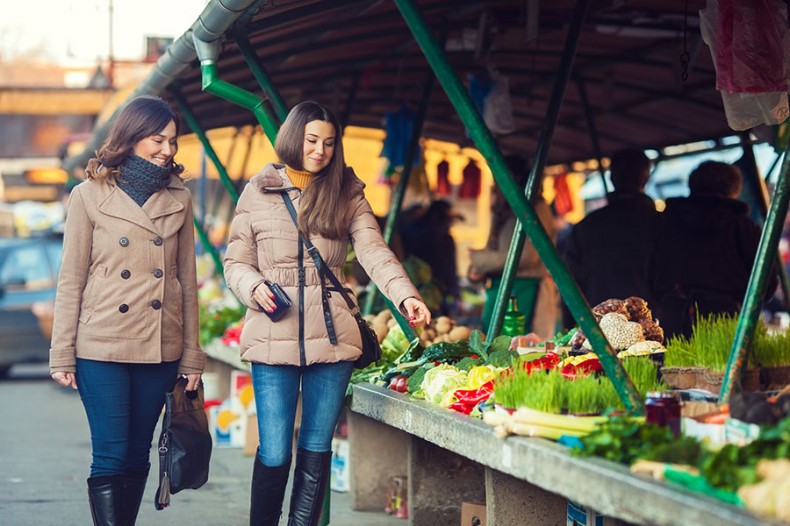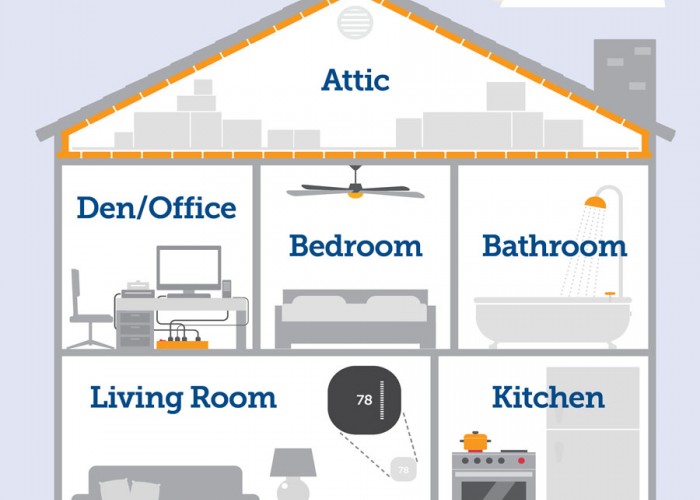Save Energy by Shopping Local
Surprising ways to limit energy use outside the home
By Hannah McKenzie
Q: I have tried explaining to my family how shopping is linked to energy use, but they think conserving energy only matters at home or while driving, where savings can be measured. Can you help?
A: Many of us are disconnected from the sources of what we consume. There is so much to know, it can be hard to see the big picture. Being around an inquisitive 6‑year‑old has me researching information like how the kiwifruit got to the U.S. from New Zealand, and who made his favorite Captain America T-shirt. You’re right that, in a variety of ways, energy use is connected to all of the comforts and conveniences we have grown to expect.
Transportation is often the easiest way to think about energy use for things we consume. Having a world map in my kitchen has helped me consider how far each food travels. We know that ships, airplanes and tractor trailers all need fuel, and when travel distance is minimized, energy is conserved. While the savings won’t show up on your power bill, the sweet strawberries picked a few miles from home might be less expensive than those from California and will likely be a local flavor you eagerly anticipate every April. Other mouth-watering local foods include peaches in June, apples and muscadines in September, peanuts and pumpkins in the fall and an abundance of greens and sweet potatoes nearly year-round. Buying local also means supporting neighbors and local families. That’s a win-win.
Transportation isn’t everything, however. For example, compared to plants, animal products like eggs, poultry and pork, which North Carolina excels at farming, require more energy to grow, feed, house and harvest. So, while buying your meat and cheese locally will have an energy benefit, reducing consumption will make an even larger impact. Drastic measures are not necessary, though — one day per week, consider making oatmeal instead of eggs for breakfast, a tomato sandwich for lunch and a southern classic of cornbread, collards and black‑eyed peas for supper. You’ll find a way to make big flavor without using a ham bone for seasoning.
In a variety of ways, energy use is connected to all of the comforts and conveniences we have grown to expect.
Non-food items need additional considerations to limit energy use. As low-quality clothing, electronics, toys and household belongings become the norm, try purchasing secondhand, repairable or long-lasting goods. Instead of four shirts that look terrible after one year, buy one higher quality shirt. There is a growing trend called “minimalism” to own and purchase as little as possible. (I see you rolling your eyes as you’ve done this your whole life … borrowing the movie, meat grinder or log splitter from your neighbor.) These choices often save energy and money and help you build lasting relationships in your community.
Finally, when you cannot purchase something locally, choose ground shipping, even if two-day shipping is free. Just like vacation, driving 2,000 miles to Michigan will use far less energy (in this case, fuel) than flying.
As you spend January reflecting and setting goals for the new year, keep looking for unconventional ways to save energy while strengthening relationships with friends and neighbors. Over time, small steps make a big difference.
-
More ways to save energy
-
Share this story:




